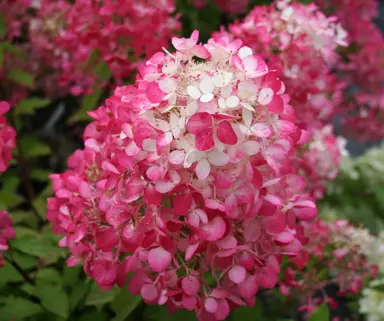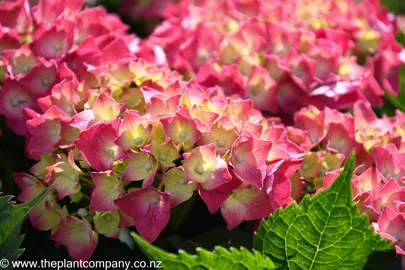Hydrangea Blue Wave
Hydrangea Blue Wave is a lacecap variety that features large flower heads made up of light blue flowers and dark blue florets. It grows with a rounded form to about 1.2 m tall and the same wide. Hydrangea Blue Wave is a great variety for adding to a mixed planting, maintaining in a container, growing as an informal hedge, including in a cottage garden, or using as a backdrop for smaller plants.










